Research has shown that being seated for long hours while at work is not the healthiest option for a person's physical and postural wellbeing. For this reason, more and more people have now started using standing desks at the office to combat the issues that come with sitting all day long.
However, that's also not an easy task to accomplish as it comes with its fair share of problems. Naturally, when a person stands all day, they begin to feel physical exhaustion after a certain point, which is why looking for ways to reduce fatigue when standing at work is essential. That's where we come in to save the day because, in this article, we cover practical ways to fight fatigue at your standing desk.
Here is how you can do it.
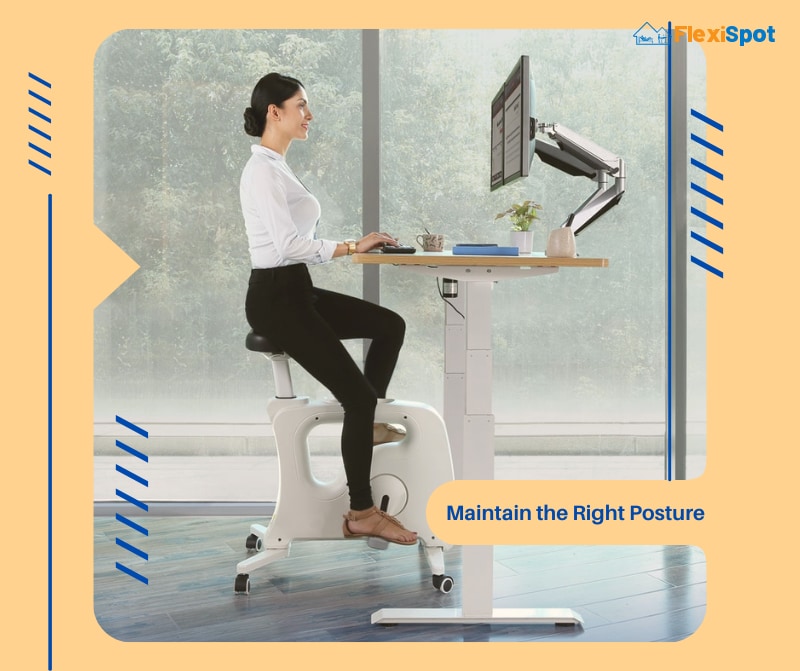
1. Maintain the Right Posture
Maintaining a proper posture is something that you must have heard about in regards to sitting for hours on end. However, that’s not the only case where this strategy applies.
The correct pose while standing at work can significantly lessen your exhaustion as you will be engaging all the right muscles.
With that said, how do you adopt the perfect stance when standing at your standing desk? If you look it up, you will come across various guides telling you many different styles to stand upright. To save you from having to go through endless web pages and literature pieces on the topic here is a super easy, uncomplicated description of what correct posture looks like.
The first thing to remember when trying to achieve the right standing position is aligning parts of your body. That is, your shoulders and hips should fall in a straight line, and so should your hips and ankles.
In other words, alignment is key for getting your posture perfect.
Stand shoulder-width apart, with your weight concentrated on the balls of your feet. You don't want to strain your extremities too much.
Open up your chest by widening your shoulders. Always remember that sagging shoulders are the first sign of an incorrect posture.
Keep your neck upright with your chin parallel to the floor.
To engage your core muscles, tuck in your tail bone and brace your core. Once you are successful in doing that, you will not feel fatigued too quickly. Our tummy, lower back, and thigh muscles- basically the entire midsection of the body, are essential in balancing our weight, which is why having a tightened core is important.
Lastly, make sure that your hips align with your shoulders and ankles.
Note: bracing the core at first may be difficult and feel rather strenuous, but once you get used to it, you will start engaging all the right muscles as a habit.
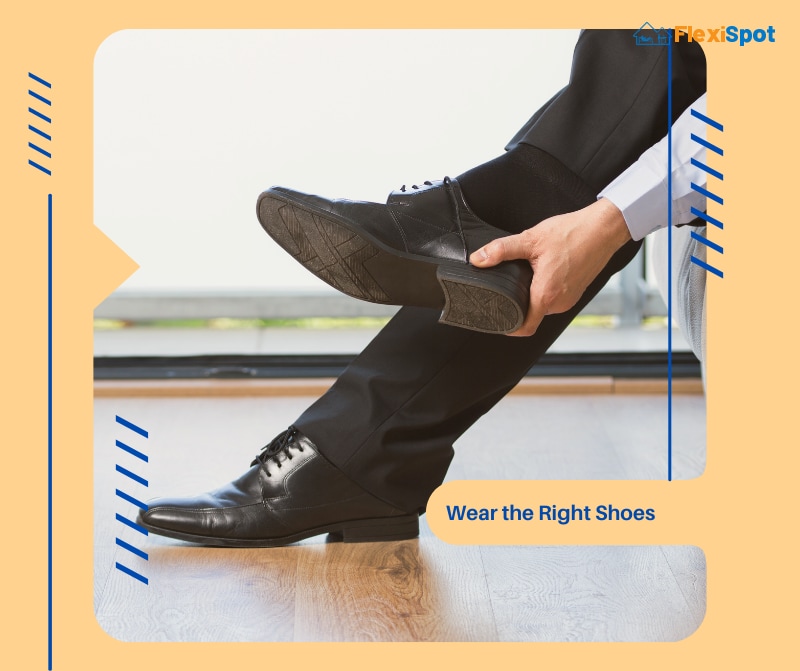
2. Wear the Right Shoes
It goes without saying that having the right shoes on when standing for long hours is imperative because that's the area where the body's entire weight is concentrated. In other words, your feet and what you have underneath them act as a foundation over which your body is balanced. Therefore, you need to wear footwear such as running shoes, sneakers, or clogs that will support your weight perfectly.

3. Take Breaks Frequently and Change Positions
When passengers on a plane have a long flight, they often get up and walk around as their lower legs begin to feel funny. That means staying in one posture is not comfortable. Moreover, according to the CDC, getting up on long flights is important to reduce clots and improve blood flow in the body.
Likewise, when we stand for too long, our blood rushes towards the lower limbs, making them stiff after a while. Therefore, roaming around for a bit after every half hour or so can improve circulation and prevent cramping.
Besides taking breaks, switch between sitting, standing, and walking. A study conducted by Cornell University revealed that sitting or standing for too long can cause heart problems and impair the body's metabolism. Therefore, having a healthy ratio between sitting, standing and walking is critical.
If you don't switch your body's position every few minutes, you will be at high risk of developing a clot, and it will also negatively impact your blood circulation. Long story short, don't remain in one position for more than half an hour at a time.
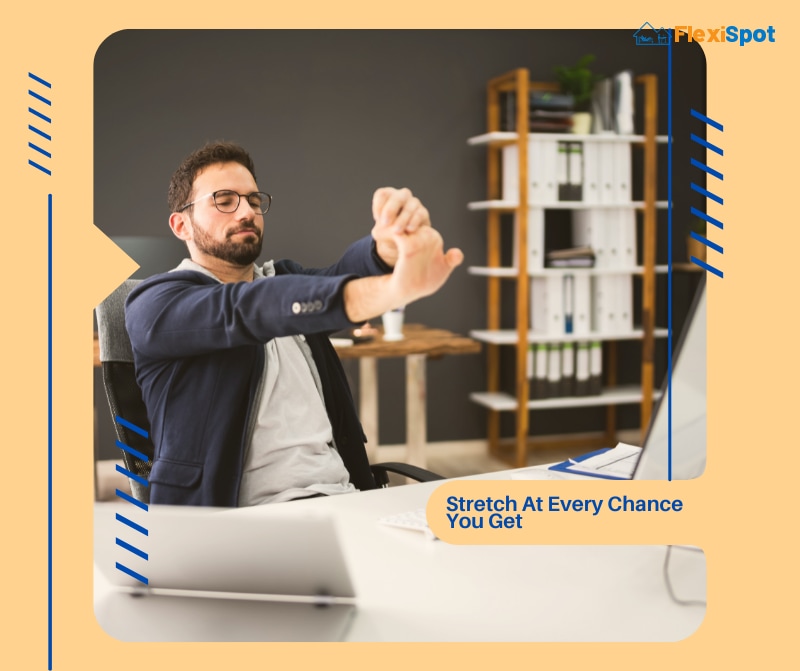
4. Stretch At Every Chance You Get
Whenever people have discussions on how to beat fatigue when standing in the workplace, one of the most common suggestions thrown around is stretching. But of course, it's not without good reason!
Stretching or cooling down muscles after straining is known to reduce tension in the tissues and lower the chances of injury. That said, stretching at work may not seem all that appropriate because you don't want to be caught in a lunging position by the boss.
However, the good thing about cooling down is that it doesn't always have entail twisting and turning the body too conspicuously. A simple neck, back, and arms stretch can be beneficial, at least until the time you don't have the office to yourself (perhaps when everyone's gone out for lunch), for a bit to practice the founder or lunge stretch.
If you want to ensure that your body doesn't bear the consequences of standing, you need to put in the effort, even if it means being a little elusive, so that no one sees you in awkward positions.
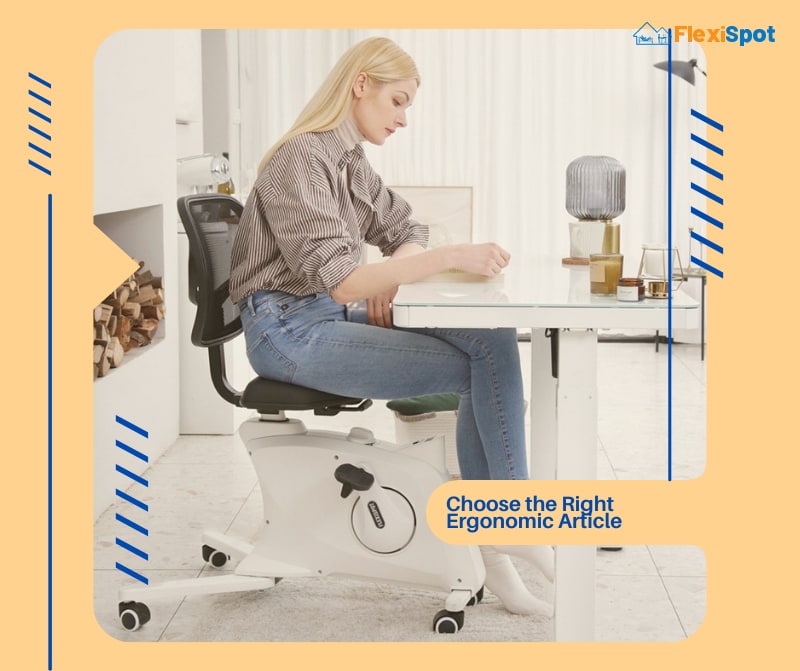
5. Choose the Right Ergonomic Article
Just like with shoes, the chair or standing desk you use at work needs to be the most beneficial and comfortable for your body. Therefore, choosing your office furniture is an important task that must do right; otherwise, your muscles will suffer.
Luckily, the furniture market is now brimming with innumerable options when it comes to picking out an office chair and desk. But while having many choices is good, it can make decision-making pretty challenging. Naturally, when you have an array of chairs and desks, you are bound to go woozy. Keeping that in mind, we decided to give you some quick tips to pick the right office furnishings
Consider going for a sit-and-stand chair, one that can change positions according to your need.
If you are not sure that working at a standing desk is right for you, you can choose a bike chair such as Sit2Go-2-in-1 Fitness Chair. Such items are excellent at ensuring that you remain active while working at a desk.
Simply put, don't stick to a simple chair if you have the option to buy a multifunctional one. That said, it must be noted that there are some pretty great ergonomic office chairs out there as well, so if you wish to get one, by all means, do so!
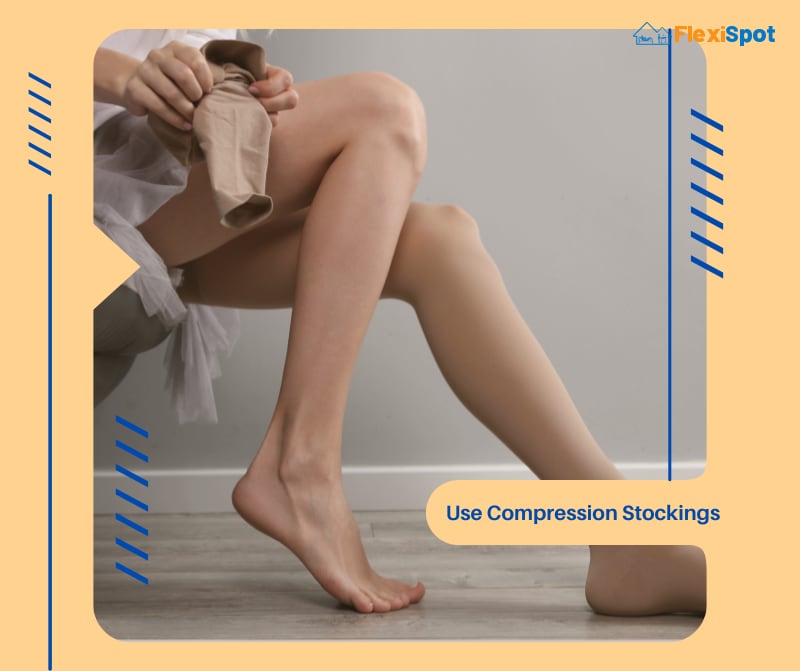
6. Use Compression Stockings
Compression stockings are used to keep the blood from concentrating in the legs. They are typically used for medical purposes, especially when people undergo surgery.
But you can get a pair of compression stockings without any medical need as many choices are available in the market for recreation purposes.
If you buy these, you can wear them underneath your pants so that you can stand more comfortably.
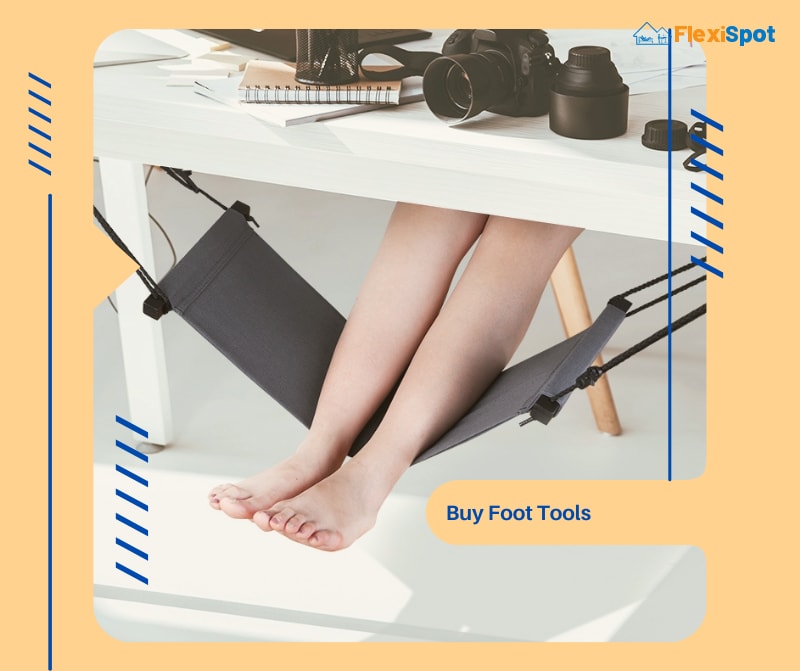
7. Buy Foot Tools
Foot tools are equipment designed to offer rest, comfort, and balance to users' feet. Some examples of those include massage mats, footstools, etc.
Massage mats are excellent at soothing the feet after you have strained your muscles. All you need to do is place them on the ergonomic article and let them relax. And once you employ the massaging feature, you will feel the exhaustion peeling away from your feet.
Another suitable foot tool to combat fatigue when standing at work is a footrest stool. All you need to do is put your feet up and let your muscles stretch.
You can even invest in a full-fledged foot massager that you keep under your desk and whenever you feel tired, turn it on to allow your feet to cool down.

8. Drink Water
Staying hydrated is also crucial if you want to stay active and not tire out while working at a standing desk. Be sure you drink water every few minutes or at least an hour to keep your muscle tissues energized.

9. Buy an Adjustable Standing Desk
If you don't want to use a chair at work and stick to working at a standing desk, consider getting an adjustable one. Those desks enable users to modify the height every once in a while so that they can change their upright stance as well.
Simply put, besides switching between sitting, standing, and walking, changing how you stand at particular intervals is good for the body.
Ending Note
As harmful as it may be, staying in one position, be it standing or sitting at work, is inevitable. But, you can surely relax your muscles and avoid getting fatigued by trying different techniques like the ones mentioned in this article. And remember, whether you stretch your muscles or not, don't compromise on the chair and desk you use because having the right furniture is critical to reducing the impact on the body.

